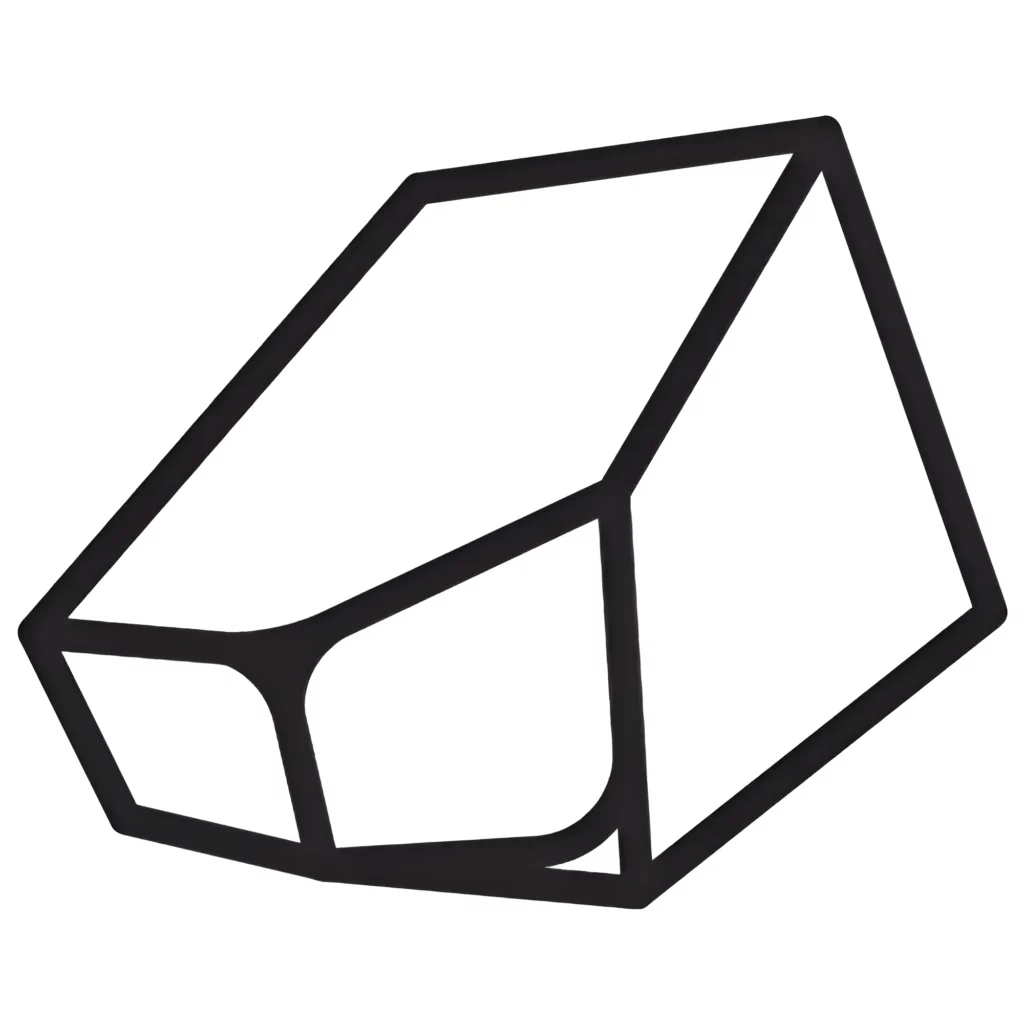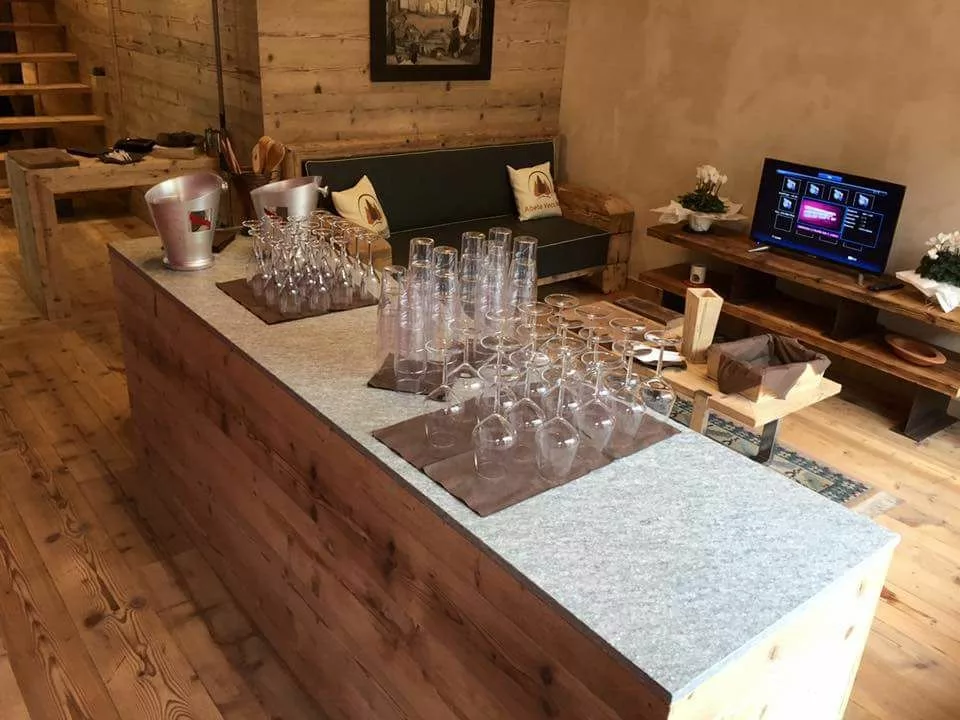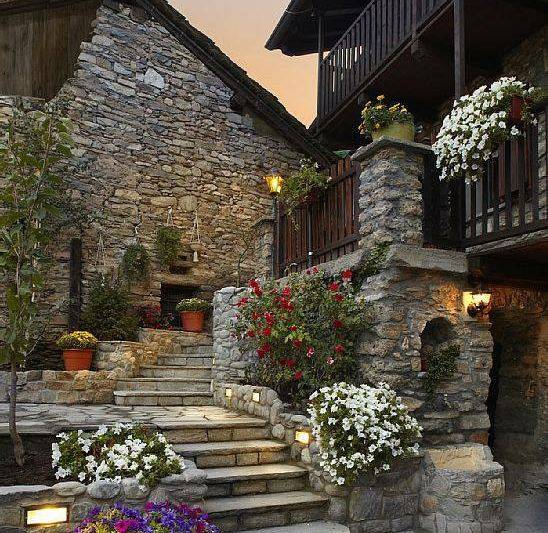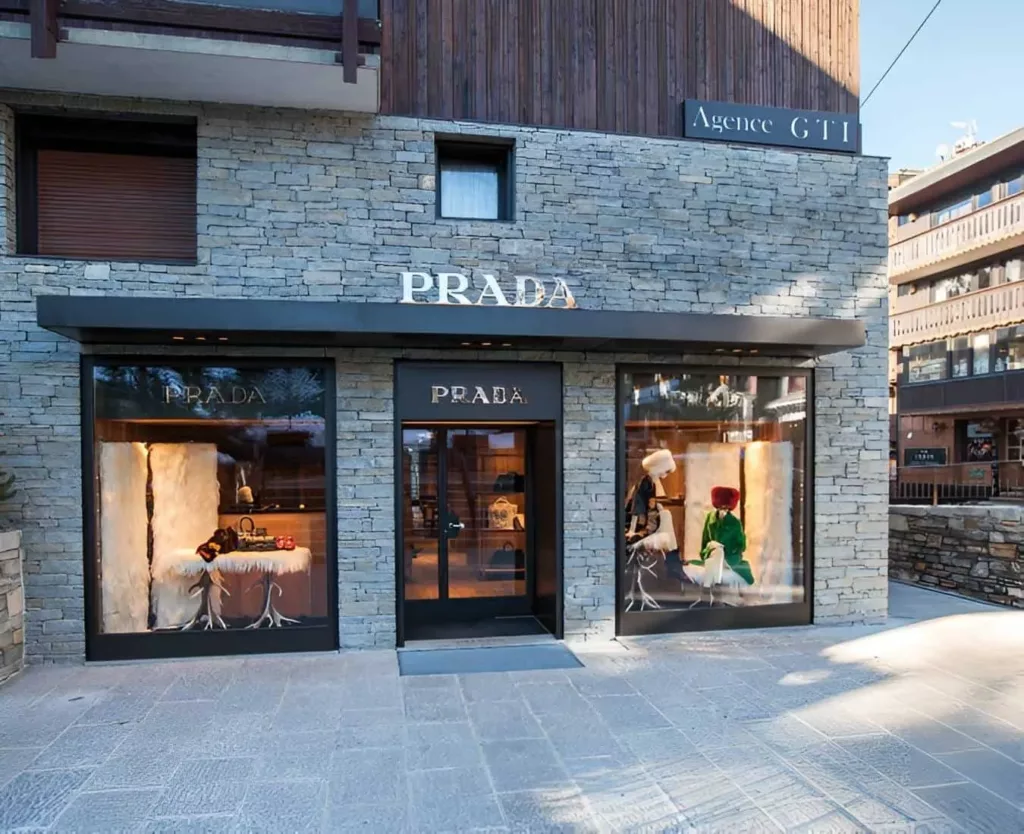Table of Contents
Luserna Stone is a gneiss that’s highly prized in construction and urban design. Much of its appeal comes from the wide range of finishes you can choose. When we speak about the stone texture of Luserna Stone, we’re referring to its various surface finishes, each with its own distinct look and feel.
This article explains the five most popular options—polished, flamed, brushed, honed and natural split—so you can pick the one that best suits your project’s needs in terms of looks, slip-resistance and performance.
Polished Luserna Stone
Technical Features
The polished finish is produced by grinding the surface with increasingly fine abrasives until it becomes smooth and glossy. The closed pores highlight colour and veining, creating a mirror-like stone texture that shows off Luserna’s classic grey-green tones.
Slip Resistance
Because the surface is so smooth, grip is low when wet. Polished stone is therefore not recommended for exterior paving or around pools, though it can work indoors if you take precautions.
Light Reflection & Visual Impact
The high gloss reflects light, brightening rooms and adding a formal, luxurious look—though it can be too much in rustic or minimalist spaces and will show fingerprints and streaks easily.
Best Uses
- High-end interiors: living areas, hotel lobbies, luxury villas
- Interior wall cladding: feature walls or staircases (with anti-slip strips)
- Furniture tops: kitchen counters, tables or vanity units
Flamed Luserna Stone
Technical Features
The flamed finish is achieved by blasting the surface with a high-temperature torch. The sudden heat shock chips the crystals and leaves a rough, granular skin. Colours appear slightly lighter and the look is natural and rustic.
Slip Resistance
Very high grip, even when wet—perfect for external steps, sidewalks, ramps and pool surrounds.
Light Reflection & Visual Impact
This stone texture is completely matt. Tones are muted and glare-free, ideal for traditional outdoor settings where durability and understatement matter.
Best Uses
- Outdoor paving: streets, piazzas, driveways
- Pool decks: maximum safety
- Exterior stairs: slip-resistant treads
- Rustic façades or plinths
Brushed Luserna Stone
Technical Features
The brushed finish is obtained by passing rotating abrasive brushes over the slab, rounding off micro-peaks. The result is a silky, velvety surface that still reveals the natural stone texture.
Slip Resistance
Medium grip: safer than polished, less than flamed. Good indoors; outdoors only in covered areas.
Light Reflection & Visual Impact
Soft, warm and slightly aged—ideal where you want an inviting feel without shine.
Best Uses
- Indoor floors: bathrooms, kitchens, living rooms
- Interior stairs
- Covered terraces and porches
- Semi-rustic furniture
Honed Luserna Stone
Technical Features
The honed finish is smoothed but stops short of full polish, giving a flat, satin stone texture with visible yet subdued colours.
Slip Resistance
Comparable to polished when wet, so best kept to dry interiors or areas with limited exposure to water.
Light Reflection & Visual Impact
Completely matt—modern, discreet and glare-free.
Best Uses
- Contemporary interiors: showrooms, minimalist kitchens
- Feature walls
- Indoor stairs
Natural-Split Luserna Stone
Technical Features
The natural split finish is the stone just as it comes out of the quarry—cleaved along schistose planes for an authentically rugged stone texture with uneven thickness and pronounced relief.
Slip Resistance
This is the grippiest option; water drains through the hollows, making it perfect for harsh climates.
Light Reflection & Visual Impact
Completely matt, raw and genuine, it fits historic or mountain settings beautifully.
Best Uses
- Rustic outdoor paving: garden paths, courtyards
- Exposed façades: farmhouses, alpine chalets
- Low retaining walls & decorative features
- Fireplaces or wine cellars for a cave-like ambience
Conclusion
We’ve reviewed five key stone textures for Luserna Stone—polished, flamed, brushed, honed and natural. Each balances design and performance differently, affecting slip-resistance, light reflection and maintenance.
- Polished: Luxe, bright, easy to clean—slippery when wet.
- Flamed: Super-anti-slip, tough, rustic, matt.
- Brushed: Velvety feel, medium grip, welcoming look.
- Honed: Smooth, matt, minimalist, limited wet grip.
- Natural: Raw, maximum grip, complex to lay, huge character.
Choose the stone texture that matches your style and performance needs.
Want polished luxury indoors? Choose the gloss. Need unbeatable outdoor safety? Go flamed or split. Prefer a soft, understated vibe? Brushed or honed is your friend.
Ready to pick the perfect stone texture for your next project? Contact us for a free quote!
Or send us your questions—our team is happy to offer personalised (and free) advice.
Articles that might interest you
Stone Texture: All Luserna Stone Finish Ultimate Guide 2025
Explore every stone texture of Luserna stone—polished, flamed, brushed, honed and natural. Which finish best suits your project? Find out in our final guide.
Installing Luserna Stone: A Comprehensive Guide for Floors, Cladding, Stairs, and Facades
Installing Luserna Stone: a comprehensive guide with step-by-step instructions, tool recommendations, and proven methods for a stable, long-lasting, and elegant result.
Stone Cladding External Walls Built to Last in Luserna Stone
Choose Luserna for stone cladding external walls that are elegant, durable and strong—enhancing façades, improving insulation and boosting your property value.



